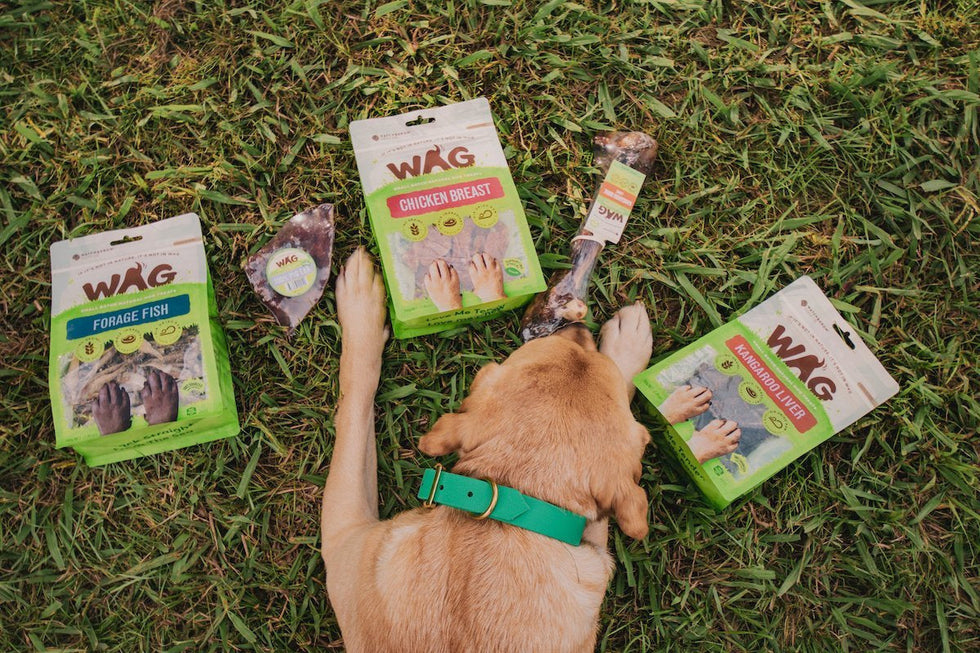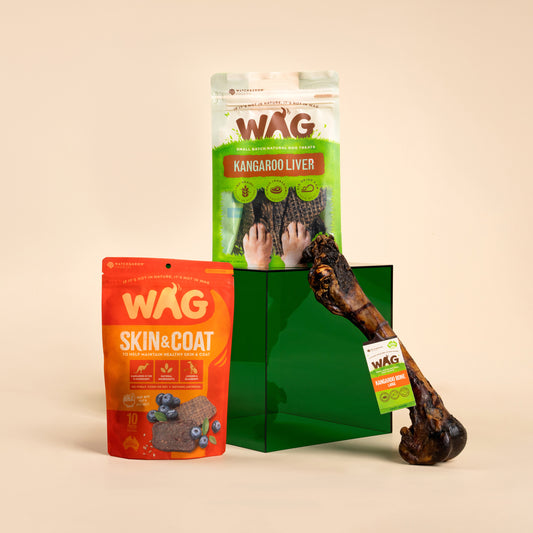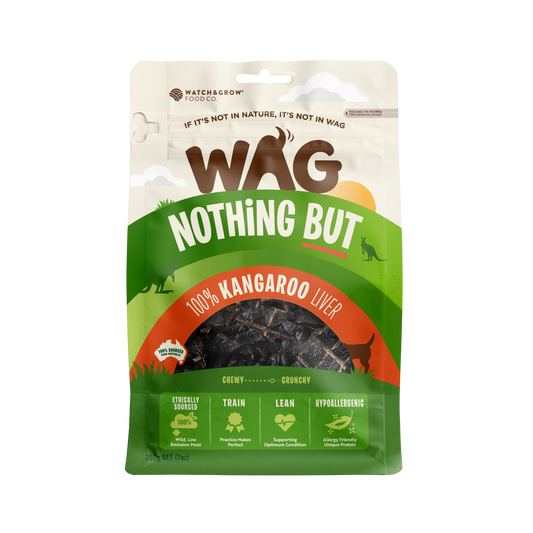Beef is one of the most popular and palatable treats out there. You can find it raw, dehydrated or freeze dried; sliced, diced or cubed; fresh, frozen or in a roll.
Natural beef treats can come in all shapes and sizes, as varied as the cows they come from. There are tough and toothsome treats like beef trachea, cow ears, cow hooves and bully sticks. There are smaller morsels like beef liver, beef jerky and beef tripe – and the list goes on.
For most doggos with a need to chew, you can be sure that there’s a beefy treat to suit their needs. But while beef is such a nutrient-loaded protein with tons of treat varieties, it’s also unfortunately one of the most common foods for dogs to be allergic to.
We’ll sing the praises of beef dog treats any day. But if allergies or food intolerances means beef doesn’t suit, don’t despair! There are tons of other delicious proteins that your doggo can indulge in without setting off an allergic reaction.
Stick around as we talk you through the basics of food allergies, the precautions to take when choosing chews, and the very best beef treat alternatives.
What is a food allergy?
If you’ve ever had an allergic reaction, you’re probably aware that they’re not a pleasant feeling. Allergic reactions are your doggo’s immune system experiencing an inflammatory response when coming in contact with a particle of food. Allergic reactions can range from mild to serious, from minor skin irritations like hives to a swollen tongue, difficulty breathing and anaphylaxis.
The bad news about food allergies is that they can develop across a dog’s entire lifespan. While most rear their head in puppyhood or adolescence, some can develop even when a doggo has been fed the identical diet their entire life.
Luckily, while food allergies can be serious, they’re relatively uncommon. Only 10% of allergy cases in canines are related to food, and even fewer of those reactions are serious. Just like us, your dog is much more likely to have or develop an allergy to environmental triggers like pollens, insects, grass or dust mites.
But for doggos with genuine allergies to certain foods, beef sadly tops the list – along with chicken, pork and grains.
How to spot a food allergy
Allergic reactions in dogs can range in appearance and severity, but they all reflect one thing: your doggo’s immune system suffering from irritation and inflammation.
Chronic ear and skin inflammation are often the first and most notable symptoms; so if your dog is frequently red and itchy with no sign of fleas, it may be an indication of allergies. Persistent gastrointestinal issues are next on the list, with chronic diarrhoea, gas and a generally upset stomach potential clues to a food intolerance.
In general, the most common sign seen by veterinarians is itching. Itchy skin, ears, paws and bum can all be caused by the inflammatory effects of a food allergy, and sometimes followed by distinct hair loss, redness or skin damage.
What to do if your dog has a beef allergy
The more exposure your dog has to a protein, the more likely they are to develop an allergy – or for their allergic response to worsen.
Identifying an allergic response involves some trial and error, with the assistance of a veterinarian to ensure you’re actually dealing with an allergy. The only way to identify a food allergy is with a food trial: which means feeding your dog a very limited diet over a period of time, slowly reintroducing proteins until you find the one causing an allergic response.
Your next step is simple: avoid the protein entirely.
This can be done pretty easily, by steering clear of any treats, chews, kibbles or raw diets that contain the protein in question. But some companies – particularly those that manufacture lower-quality and super inexpensive treats – can complicate this, by concealing ‘secret’ foods in the ingredients panel that you won’t find on the front sticker.
Always check the ingredients label when dealing with doggo allergies, and remember: just because the bag name says “chicken and rice” doesn’t mean there isn’t beef hidden away in the formula, too!
When choosing treats, stick to single-ingredient chews and there’s nothing to fear. It’s much harder to include any hidden nasties in all-natural animal parts like jerky, bones and hooves.
Find your perfect protein
So your doggo is allergic to beef. First step: don’t panic.
While it’s sad to say goodbye to all the treat options beef has to offer, variety is the spice of life and there’s so much to choose from in the world of chews.
For doggos that are prone to allergies, it’s best to stick to novel proteins: meaning ingredients that aren’t commonly found in food or treats. The less exposure your dog has had to a novel protein, the less likely they are to have any pre-existing intolerances.
Some of our favourite (and most accessible) novel proteins include:
Just because beef is off your doggo’s nice list doesn’t mean their treat options have to be limited. There’s so much out there to choose from – all your doggo’s gotta do is chew.
Shop the Recipe
Gemma Sheehy
Up Next
The Environmental Impact of Dog Treats




